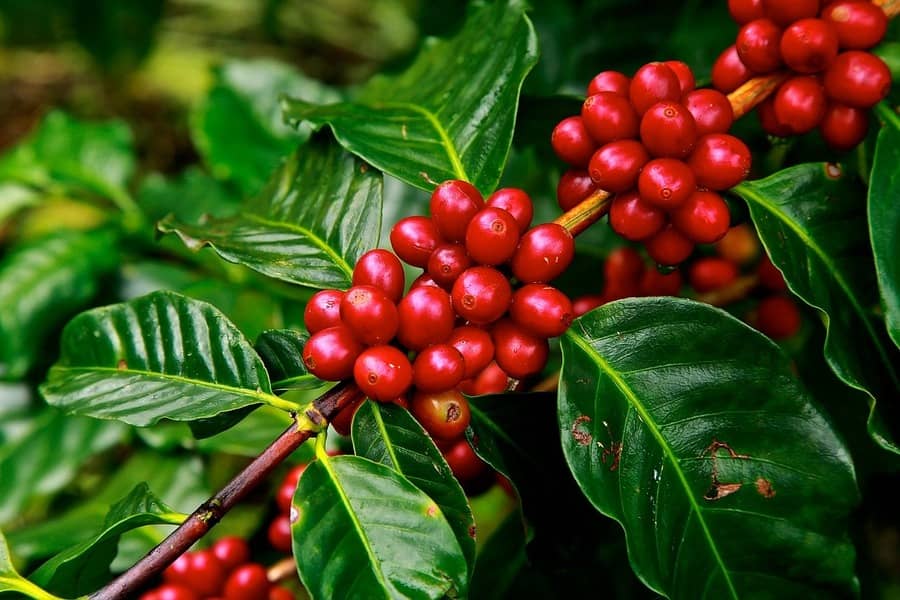The transition from a record crop year to another of strong crop losses in Brazil served as initial encouragement to international coffee prices, particularly in the case of arabica. The strong drought, especially between April and May, followed by the frost in July in Brazil, boosted these gains. The international logistical bottleneck, on the other hand, caused supply problems due to the lack of containers, space in ships, and surge in freight rates and ended up reducing the stocks held by industries, which also contributed to the raise in coffee prices.
This combination of factors explains the rally on ICE US, with the second position of arabica coffee starting at 130 cents to close the year 2021 at 226 cents, accumulating 74% gains. It is good to remember that arabica in NY exchanged hands above 252 cents, the highest level in 10 years. This performance made coffee stand out positively against other commodities, easily surpassing the gains of the CRB index (+39%) and WTI oil (+56%).
The dollar, which could serve as a negative counterweight, had great volatility and small gains last year. The US currency showed strength against its peers, especially emerging currencies. Internal fiscal weakness and the depreciation of economic indicators in Brazil contributed to the loss of value of the local currency. Thus, the dollar advanced from BRL 5.19 to 5.58 at the end of 2021, accumulating a gain of 9%.
The ICE rally and the firm dollar supported domestic coffee prices. And arabica good cup in the south of Minas Gerais started 2021 at BRL 525 and closed it at BRL 1,410 a bag, an increase of 169% in nominal values. In values deflated by the IGP-M inflation index, the current price level is the highest since December 1999. This means that the purchasing power of a coffee bag has reached the highest levels in 22 years. Even with a much higher production cost, the year 2021 is historic and extremely positive for growers.
Outlook for the coffee market in 2022
The coffee market starts the year 2022 groping for some direction, after the gains accumulated last year. With no major fundamental news and, to a large extent, already priced, the coffee market is vulnerable to financial volatility, which should remain high, at least at this beginning of the year. Pay attention to the advance of Omicron in Europe and the United States as well as the impacts of the raise in US interest rates. The rally in oil and its influence on the CRB index also draws attention at this moment of fundamental vacuum.
But the big determinant of the coffee market in 2022 is the size of the next Brazilian crop. The sequence of drought (April and May) and frost in July ended up reducing the potential of Brazil’s 2022 crop. The return of rains in October induced a good blossoming and encouraged growers and buyers. The idea in the post-blossoming period was an arabica crop between 38/40 mln bags, which corresponds to a decline of 10/12 mln bags compared to the last high load cycle (50 mln in 2020). In any case, the lower potential of arabica must be partially offset by the increase in the production of robusta – estimated between 23/25 mln bags. With that, the initial idea is that Brazil’s 2022 production must hit 61/65 mln bags. But plant abortion has raised doubts among farmers about the possibility of crops reaching such potential.
In the face of higher-than-expected losses, there is room for another bullish movement on ICE US. The confirmation of the previous production scenario may even allow a slight moderation in the price curve, especially with the supply advance of new coffee in Brazil. It is good to remember that coffee prices accumulated a gain of more than 74% in 2021.
In general terms, 2022 is expected to remain with a tight supply, given the loss of crop potential in Brazil. Demand must remain slow. Despite a better flow, industries should still suffer a little from the logistical cost, not to mention new effects caused by possible restrictions due to new coronavirus variants, especially in the first months of 2022.
Arabica should remain valued against robusta, which implies a more flexible posture in the blend on the part of industries, particularly here in Brazil. Special attention to the second half of the year, with the blossoming of Brazil’s 2023 crop, which, in case of achieving a positive productive response, may affect prices more significantly.

